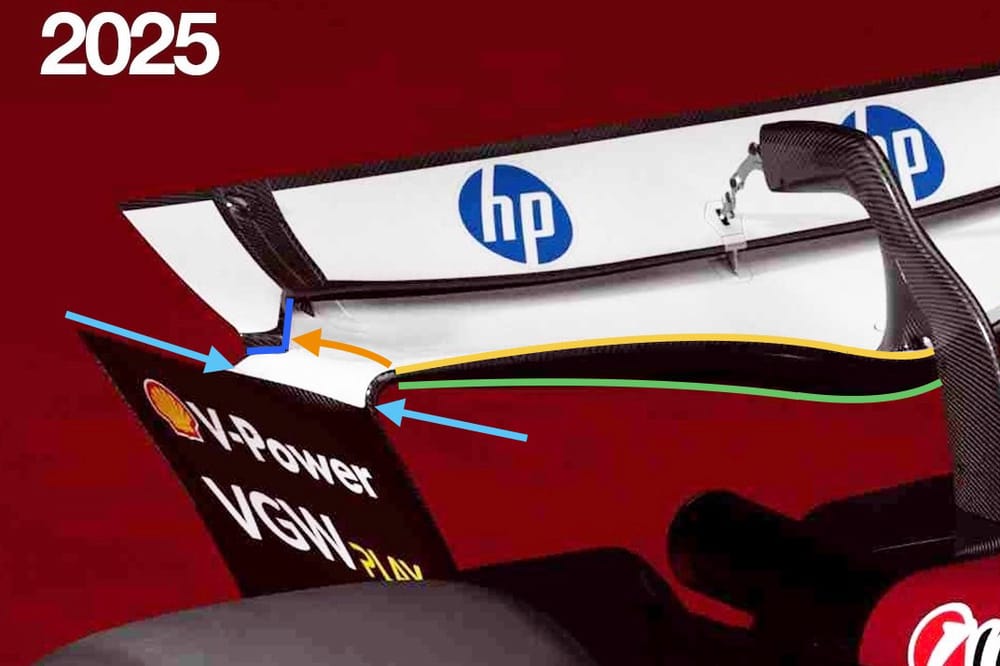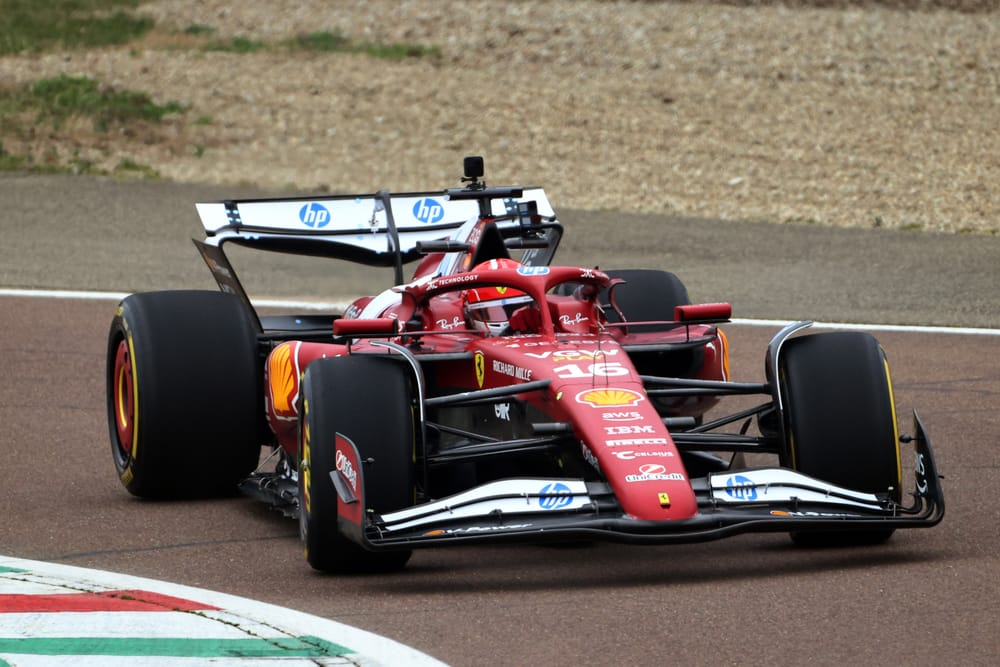It's interesting to compare Ferrari's family of rear wings from 2024 to what it's now run for its Fiorano shakedown on Wednesday.
Rear wings are a bolt-on item so change frequently from track to track, but once you have a design philosophy you would normally stick with it and simply increase or decrease the 'V' shape - but that's not what Ferrari has done in 2025 so far.
It's these outer ends and the leading edge that are interesting so I have focused in on these areas below to help explain it all.
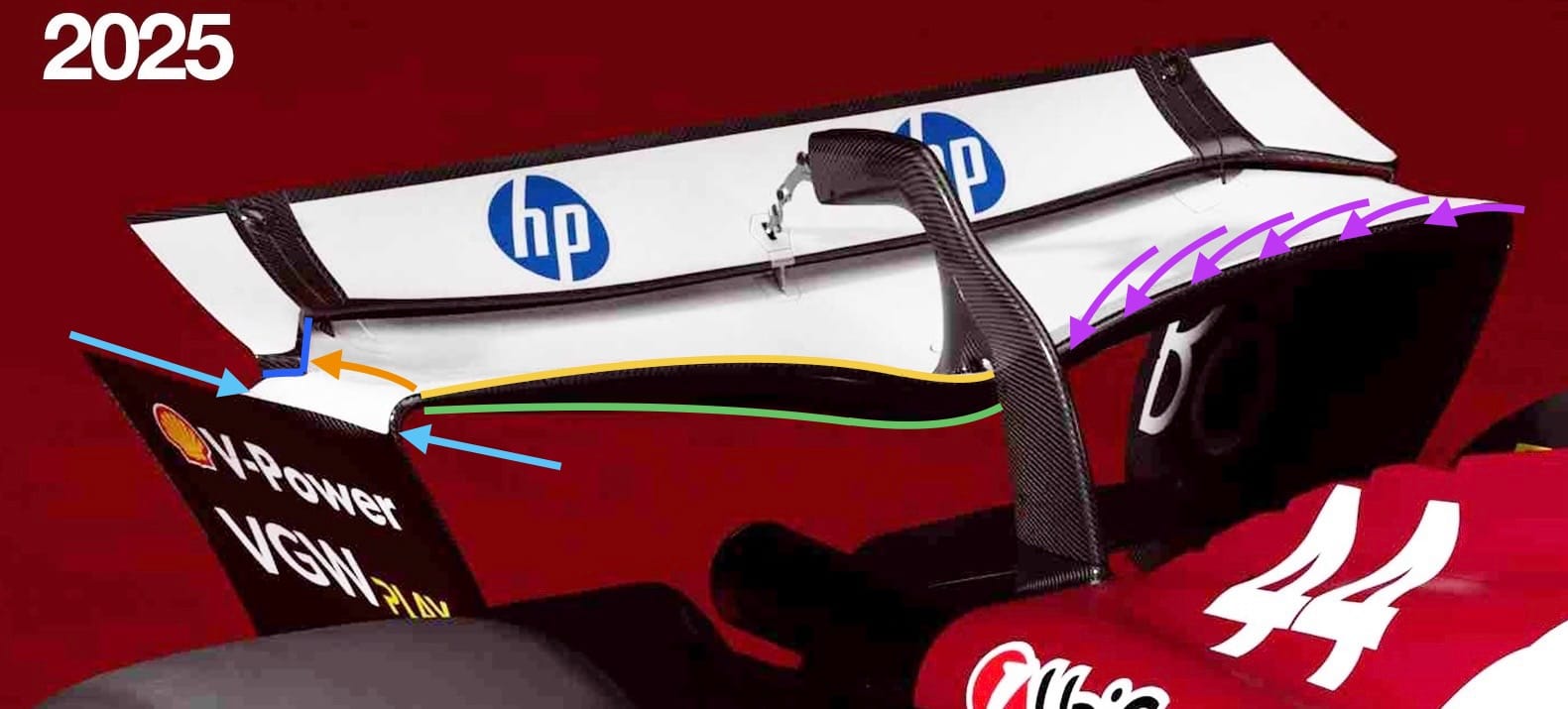
Starting with the raised leading edge, which has the yellow highlight line, this is what is called the stagnation point.
It varies slightly upwards and downwards with speed but in general, a raised stagnation point means that more of the mass flow is pulled through underneath the rear wing. This flow is highlighted with the magenta arrows.
It could also mean that the airflow arriving to the leading edge is coming over the car's centre line body section from higher up, so again there's a higher level of mass flow arriving at the leading edge of the wing in this area.
This will increase the downforce at lower speeds as the distance between the stagnation point line and the trailing edge of the main plane. In turn, the trailing edge of the flap is longer so to get from A to B the airflow has to travel faster.
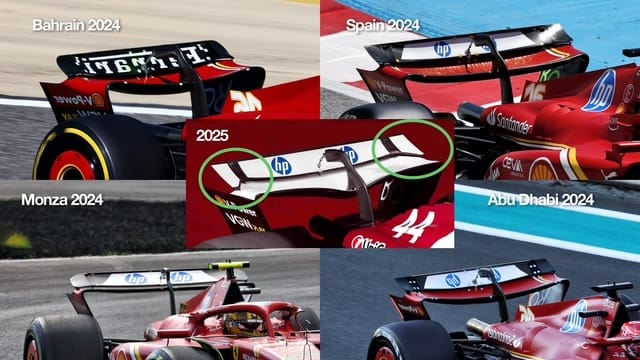
The outer section of the rear flap, which I have highlighted with the green ellipses above and the blue lines on its leading edge below, increases the cord length of the flap in this area which in turn decreases the cord length of the main plane in that outer area where the main plane surface rolls over into the endplates - I have highlighted this main plane cord length with the light blue arrows.
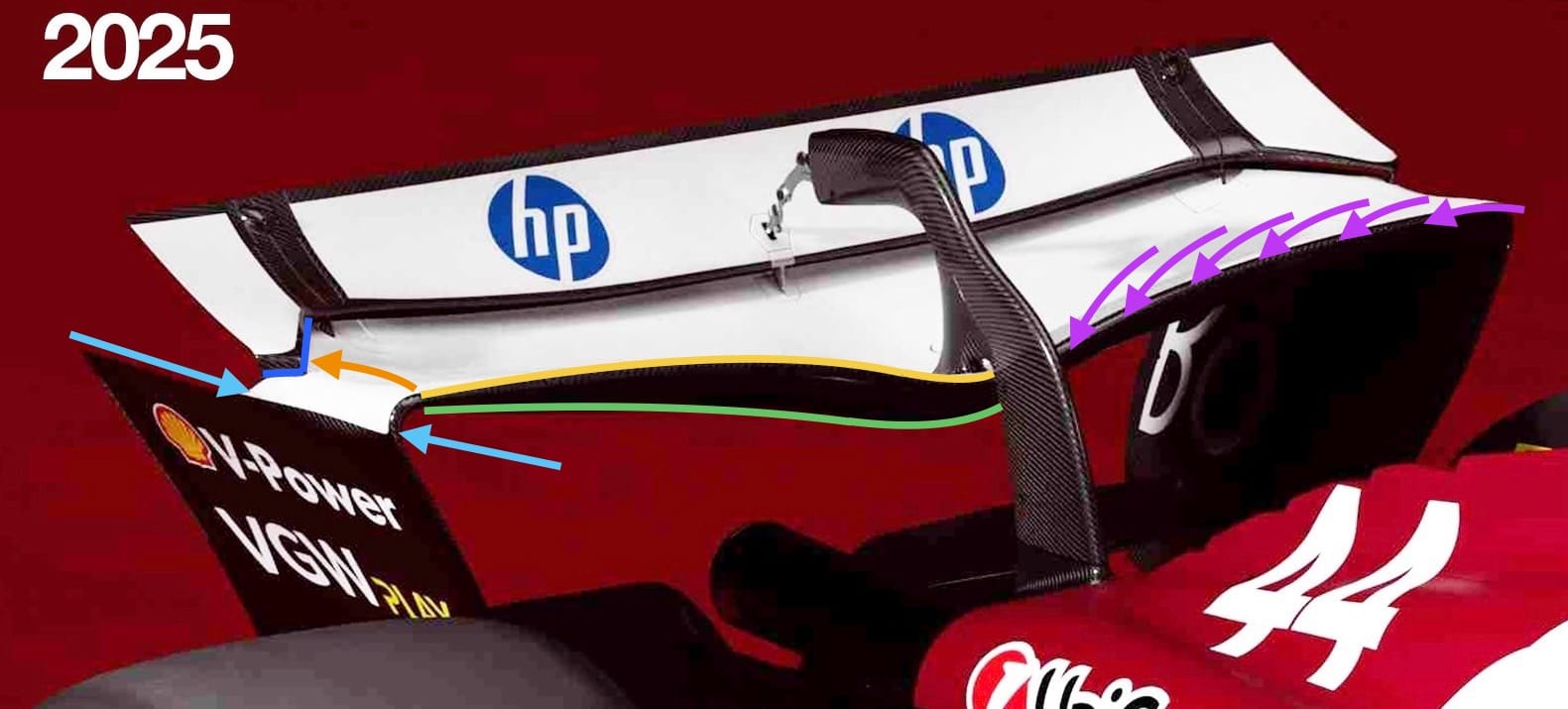
The outer vertical mounting is also curved outwards, inviting more flow through the slot gap and highlighted with the orange arrow directing it outwards.
Want more from Gary Anderson? Join The Race Members' Club on Patreon now and get early access to many of his columns plus ad-free versions of The Race F1 Tech Show podcast with Gary and Edd Straw - there's 90% off your first month if you join now
This outer end of the wing detail is fairly dragy so the teams exploit ideas to minimise the vortex that we see when the cars are running in damp conditions. There is always a price to pay - in this case, a loss of downforce - but you are searching for overall efficiency so for Ferrari, this is a decent compromise.
It's interesting that Ferrari and Haas, which share the same windtunnel, have both followed this direction.

